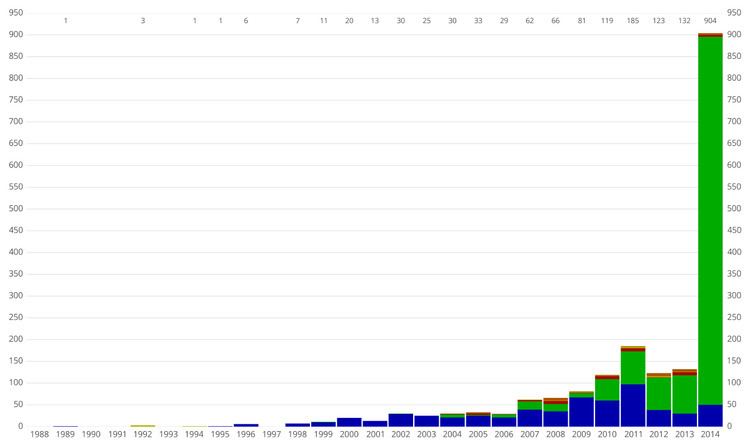 | ||
From the total of 2,691 stars known to have exoplanets (as of March 1, 2017), there are a total of 603 known multiplanetary systems, or stars with at least two confirmed planets, beyond the Solar System. About 280 of these have only two confirmed exoplanets, but some have a significantly larger number. The star with the most confirmed planets is our Sun with 8 confirmed planets, while the stars with the most confirmed exoplanets are Kepler-90, HD 10180, HR 8832 and TRAPPIST-1, with 7 confirmed planets each; in 2012, two more exoplanet candidates have been suggested for HD 10180, which would bring the total to 9 exoplanets in that system.
Contents
The 603 multiplanetary systems are listed below according to the star's distance from Earth. Gliese 876, with 4 confirmed exoplanets, is the closest multiplanetary system at 15 light years from the Solar System. A total of 12 systems are known that are closer than 50 light years away, but most are much farther away. The farthest confirmed multiplanetary system is OGLE-2012-BLG-0026L, at 13,300 ly away.
The table below contains information about the coordinates, spectral and physical properties, and number of confirmed planets. The two most important stellar properties are mass and metallicity because they determine how these planetary systems form. Systems with higher mass and metallicity tend to have more planets and more massive planets.
Multiplanetary systems
Stars orbited by both planets and brown dwarfs
Stars orbited by objects on both sides of the 13 Jupiter mass dividing line.
